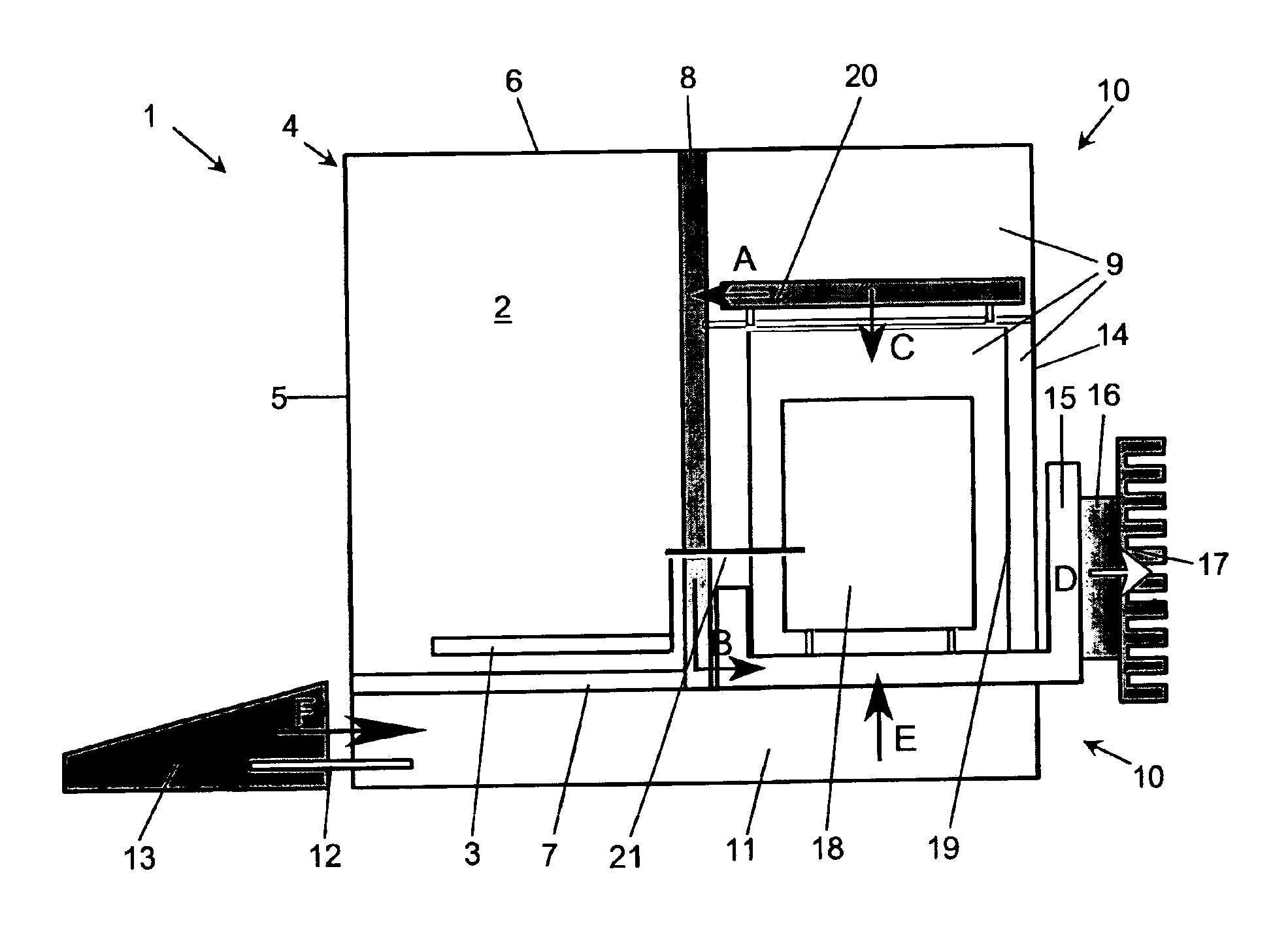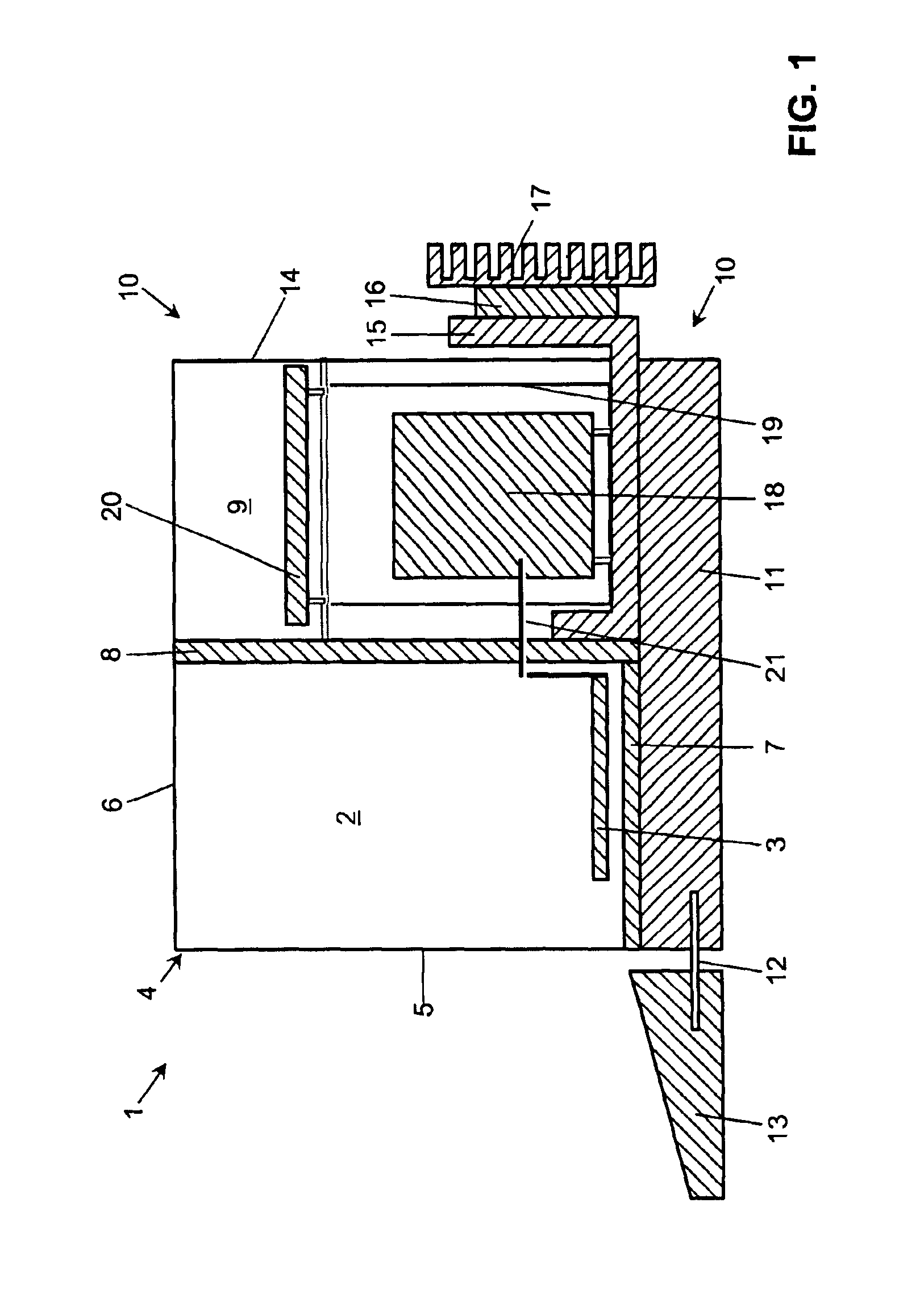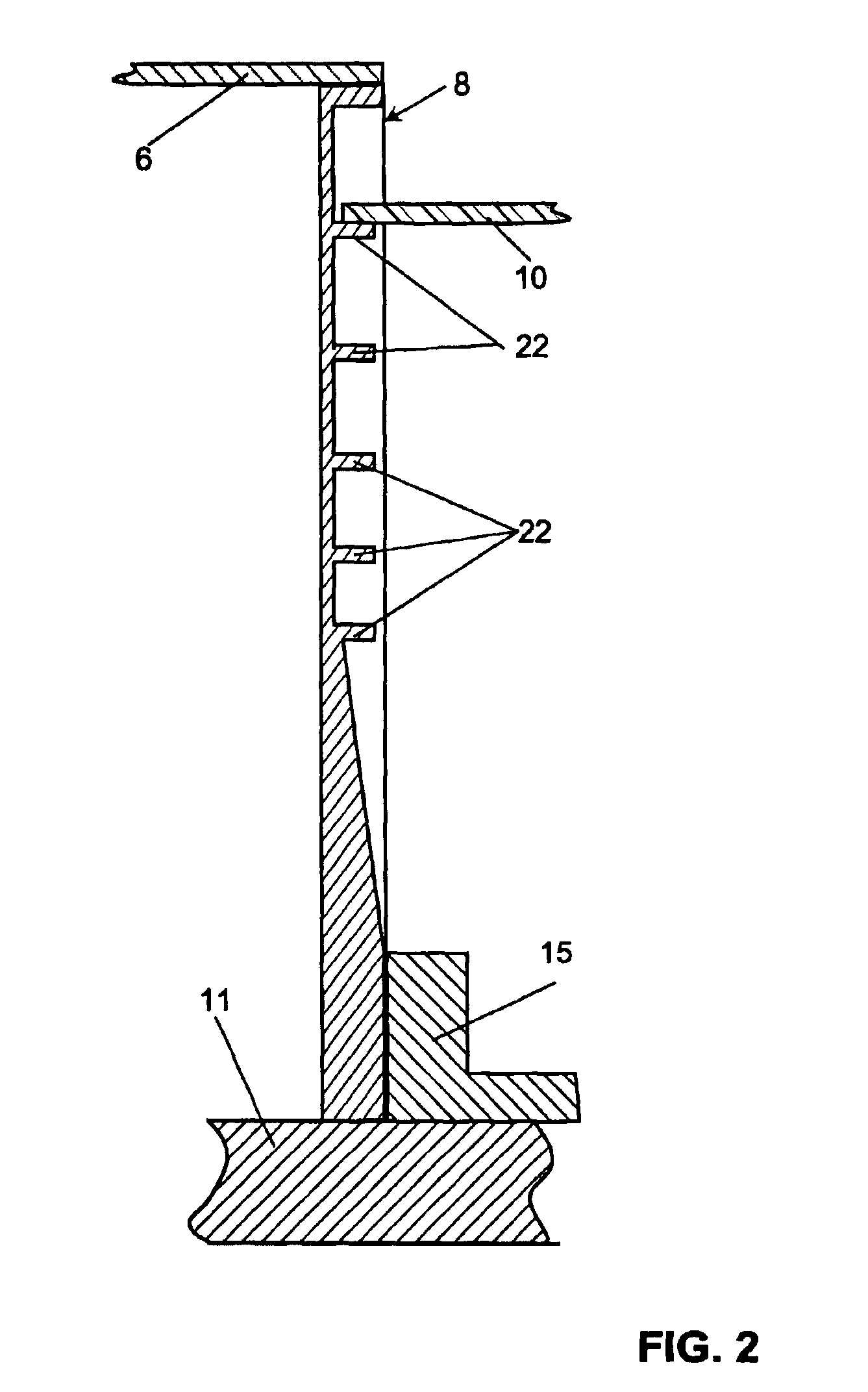Balance with a heat removing device
a technology of a weighing pan and a heat removal device, which is applied in the direction of weighing devices, measuring devices, instruments, etc., can solve the problems of unstable air strata in the weighing compartment, large length of time of weighing result, and high cost, and achieve the effect of more flexibility
- Summary
- Abstract
- Description
- Claims
- Application Information
AI Technical Summary
Benefits of technology
Problems solved by technology
Method used
Image
Examples
Embodiment Construction
[0024]FIG. 1 shows a lengthwise sectional view of a balance of a type that is often used as an analytical balance for weighing minute amounts of materials in laboratories. The balance 1 has a weighing compartment 2 containing a weighing pan 3 and being surrounded by a draft shield 4. The latter has a preferably fixed front wall 5 and wall panels that are movable to open and close the weighing compartment 2. The movable wall panels include a top cover panel 6 delimiting the top side of the weighing compartment, and side wall panels (not visible in the drawing) delimiting the weighing compartment laterally. At the bottom and towards the rear (relative to the working position of the balance), the weighing compartment 2 is closed off by further parts of the draft shield enclosure 4, i.e., by a weighing compartment floor 7 and by a vertical wall, in the illustrated embodiment a separating wall 8 bordering on a measuring cell compartment 9. The measuring cell compartment 9 contains primar...
PUM
 Login to View More
Login to View More Abstract
Description
Claims
Application Information
 Login to View More
Login to View More - R&D
- Intellectual Property
- Life Sciences
- Materials
- Tech Scout
- Unparalleled Data Quality
- Higher Quality Content
- 60% Fewer Hallucinations
Browse by: Latest US Patents, China's latest patents, Technical Efficacy Thesaurus, Application Domain, Technology Topic, Popular Technical Reports.
© 2025 PatSnap. All rights reserved.Legal|Privacy policy|Modern Slavery Act Transparency Statement|Sitemap|About US| Contact US: help@patsnap.com



